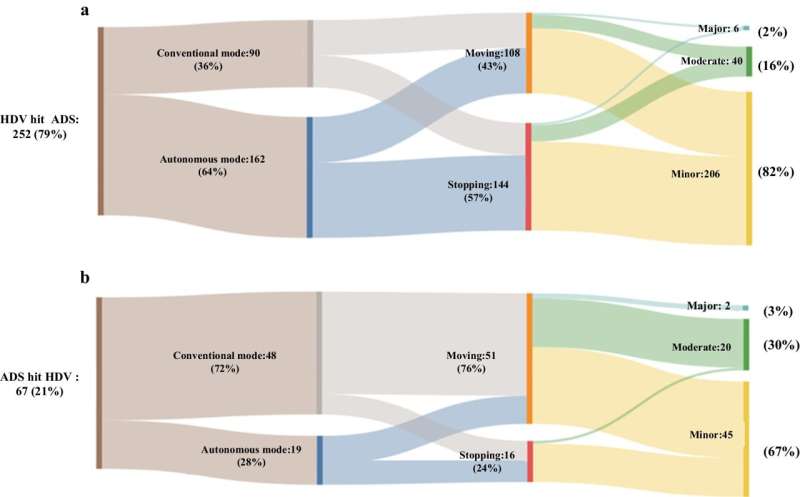
A pair of engineers at the University of Central Florida has found that autonomous vehicles are generally safer than those driven by humans except under two conditions.
In their study, published in the journal Nature Communications, Mohamed Abdel-Aty and Shengxuan Ding analyzed automobile crash data for California over the years 2016 to 2022, comparing the safety of autonomous vehicles versus human-operated vehicles.
Over the past several years, accidents involving autonomous vehicles have been reported extensively by the media, giving the impression that such vehicles may be unsafe or less safe than vehicles driven by human beings.
For this new study, the researchers analyzed accident statistics for California, a U.S. state that has allowed thousands of autonomous vehicles to travel freely on public roads for several years, but only if they are authorized by the vehicle manufacturer. The researchers looked at accident data for 2,100 autonomous vehicles and 35,113 human-driven vehicles and compared crash rates under different scenarios.
The researchers found that under most conditions, the autonomously driven vehicles were safer than were those driven by humans. Put another way, they suggest the odds of an accident in an autonomous car were lower than for human-driven vehicles driving in similar situations.
But they did find two scenarios in which human-driven cars were safer: at dawn/dusk and when turning. Low light conditions such as sunset or sunrise appeared to confuse the sensors of autonomous vehicles. So too did the complicated conditions that can arise during turning situations.
The researchers suggest that highlighting the weak points of autonomous vehicles should lead to efforts by vehicle makers to solve the issues, ultimately making them safer. They also note that as the technology matures, as it did with human-driven vehicles, the vehicles will also become safer.
They suggest more studies are required to ensure continued improvements in autonomously driven vehicles, especially considering most major car makers have plans to phase out human-driven cars in the years ahead.
More information: Mohamed Abdel-Aty et al, A matched case-control analysis of autonomous vs human-driven vehicle accidents, Nature Communications (2024). DOI: 10.1038/s41467-024-48526-4
© 2024 Science X Network
Citation: Autonomous vehicles found to be safer than human drivers, except in two types of situations (2024, June 19) retrieved 19 June 2024 from https://techxplore.com/news/2024-06-autonomous-vehicles-safer-human-drivers.html
This document is subject to copyright. Apart from any fair dealing for the purpose of private study or research, no part may be reproduced without the written permission. The content is provided for information purposes only.
